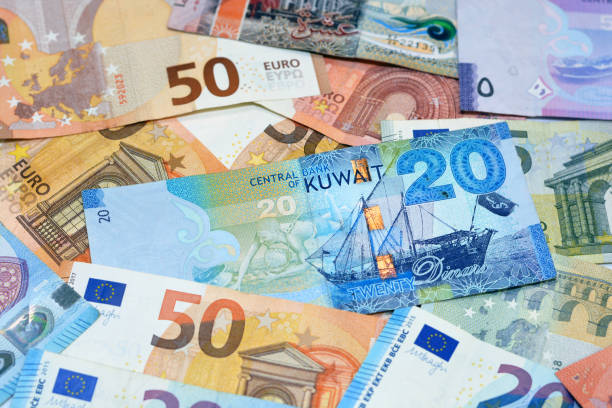The Kuwaiti Dinar (KWD) stands as a symbol of stability and economic prosperity in the Middle East. With its rich history and a robust economic foundation, the Kuwaiti Dinar has become a beacon of financial strength. In this article, we will delve into the origins, historical significance, and the current state of the Kuwaiti Dinar.
Historical Background:
The Kuwaiti Dinar has a fascinating history that dates back to the early 20th century. Prior to the introduction of the dinar, various currencies circulated in Kuwait, including the Indian Rupee and the British Pound. However, in 1960, Kuwait decided to establish its own national currency, leading to the birth of the Kuwaiti Dinar.
Kuwaiti Dinar’s Introduction and Pegging:
Upon its introduction, the Kuwaiti Dinar was pegged to the British Pound Sterling. This pegging was a strategic move to stabilize the newly established currency and ensure economic confidence. In 1975, Kuwait shifted the peg to the United States Dollar (USD), a move that remains in place to this day. The pegging of the Kuwaiti Dinar to a major international currency has played a crucial role in maintaining economic stability and attracting foreign investments.
Economic Significance:
Kuwait boasts one of the most prosperous economies in the Middle East, largely due to its abundant oil reserves. The country’s economic policies and prudent fiscal management have contributed to the stability of the Kuwaiti Dinar. The peg to the USD ensures that the exchange rate remains relatively constant, providing a sense of security for investors and traders.
The Kuwaiti Dinar is recognized for its high value compared to other currencies. Its strong purchasing power is a reflection of the nation’s economic prowess. Kuwait’s economic diversification efforts, which include investments in finance, real estate, and infrastructure, have further strengthened the resilience of the Kuwaiti Dinar against external shocks.
Currency Design and Security Features:
The Kuwaiti Dinar has a distinctive design that reflects the country’s cultural heritage and modern outlook. The banknotes feature iconic landmarks, historical figures, and symbols that showcase Kuwait’s identity. Moreover, advanced security features, such as holographic strips, watermarks, and intricate designs, have been incorporated into the currency to prevent counterfeiting.
Central Bank of Kuwait:
The Central Bank of Kuwait (CBK) plays a pivotal role in the management and regulation of the Kuwaiti Dinar. Established in 1969, the CBK is responsible for implementing monetary policies, issuing currency, and maintaining the stability of the financial system. The CBK’s commitment to transparency and sound financial practices has contributed significantly to the trust placed in the Kuwaiti Dinar.
Regional Impact and Influence:
The Kuwaiti Dinar’s stability extends beyond the country’s borders, impacting the economic dynamics of the entire Gulf region. As one of the most powerful currencies in the Middle East, the Kuwaiti Dinar influences trade, investment, and financial transactions within the Gulf Cooperation Council (GCC) countries. Its strength contributes to the region’s overall economic confidence and resilience.
Global Investments and Foreign Exchange Reserves:
Kuwait’s prudent economic policies have led to the accumulation of substantial foreign exchange reserves. The strength of the Kuwaiti Dinar has made it an attractive currency for global investors and traders. The country’s sovereign wealth fund, the Kuwait Investment Authority (KIA), is one of the largest in the world, further emphasizing Kuwait’s financial prowess.
Challenges and Future Outlook:
While the Kuwaiti Dinar has enjoyed decades of stability, it is not immune to challenges. Fluctuations in oil prices, geopolitical tensions, and global economic uncertainties can pose risks to the currency’s stability. Kuwait recognizes the importance of economic diversification to mitigate these risks, and ongoing initiatives aim to reduce the country’s reliance on oil revenues.
Looking ahead, Kuwait is set to embrace digital advancements in the financial sector. The Central Bank of Kuwait has been exploring the potential of digital currencies, which could have implications for the future of the Kuwaiti Dinar. However, any such transition would likely be approached cautiously to ensure the continued stability of the national currency.
Conclusion:
The Kuwaiti Dinar stands as a testament to the economic achievements of Kuwait. Its journey from a pegged currency to a symbol of stability and prosperity reflects the nation’s commitment to sound economic policies and prudent financial management. As a key player in the Gulf region, the Kuwaiti Dinar continues to influence regional and global financial dynamics. With a rich history, a strong economic foundation, and a commitment to adapting to changing times, the Kuwaiti Dinar is poised to remain a symbol of financial strength for years to come.

